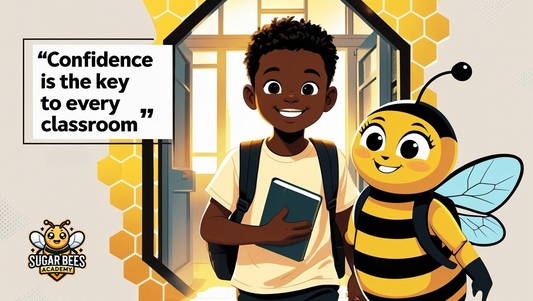
Cultivating Confidence: Empowering Young Learners Through Encouragement
Share
Cultivating Confidence: Empowering Young Learners Through Encouragement
Confidence is a cornerstone of successful learning. When children believe in their abilities, they are more likely to embrace challenges, persist through difficulties, and achieve their goals. At Sugar Bees Academy, we are dedicated to fostering an environment where young learners develop self-assurance and a passion for discovery.
⸻
The Importance of Confidence in Early Education
A child’s confidence influences their willingness to participate, take risks, and engage with new concepts. Confident learners are more resilient, better equipped to handle setbacks, and more likely to seek out opportunities for growth. Building this confidence early sets the stage for lifelong learning and personal development.
⸻
Strategies to Build Confidence in Young Learners
1. Positive Reinforcement
Acknowledging children’s efforts and achievements reinforces their belief in their capabilities. Specific, sincere praise encourages them to continue striving and learning.
Example:
Instead of saying, “Good job,” try, “I noticed how carefully you colored within the lines; your attention to detail is impressive!”
2. Setting Achievable Goals
Helping children set and accomplish small, attainable goals builds their confidence incrementally. Each success reinforces their self-belief and motivates them to tackle more challenging tasks.
Example:
Encourage a child to learn five new vocabulary words in a week, celebrating their achievement upon completion.
3. Encouraging Autonomy
Allowing children to make choices and take responsibility for their learning fosters independence and self-confidence. Providing options empowers them to take ownership of their educational journey.
Example:
Let students choose between two reading assignments, giving them a sense of control over their learning.
4. Modeling Confidence
Educators and parents serve as role models. Demonstrating confidence in one’s abilities and showing how to handle mistakes gracefully teaches children to do the same.
Example:
If an adult makes an error, they can say, “I made a mistake, but that’s okay; I can learn from it,” illustrating resilience and a positive attitude.
5. Creating a Supportive Environment
A nurturing community where children feel safe to express themselves encourages risk-taking and exploration. Supportive peers and adults can significantly impact a child’s confidence.
Example:
Implementing group projects where students collaborate and support each other’s learning fosters a sense of belonging and mutual encouragement.
⸻
The Role of Sugar Bees Academy in Confidence Building
At Sugar Bees Academy, we integrate confidence-building strategies into our daily practices:
• Personalized Learning Plans: Tailoring education to individual strengths and interests to promote engagement and self-efficacy.
• Celebration of Achievements: Recognizing both big and small accomplishments to reinforce positive behavior and effort.
• Safe Learning Spaces: Creating environments where mistakes are viewed as learning opportunities, not failures.
• Community Involvement: Encouraging family and community participation to provide a robust support system for students.
⸻
Conclusion
Building confidence in young learners is essential for their academic and personal success. Through positive reinforcement, goal setting, autonomy, modeling, and a supportive community, children can develop the self-assurance needed to embrace challenges and thrive. At Sugar Bees Academy, we are committed to empowering our students to become confident, resilient, and enthusiastic learners.



